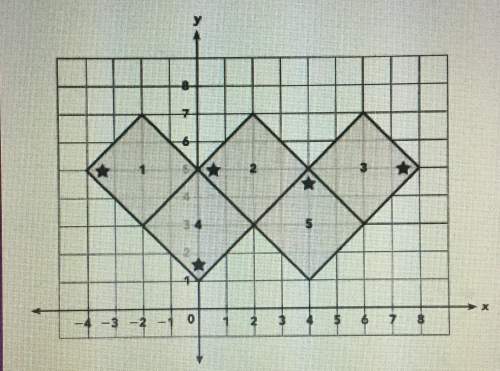
Mathematics, 29.06.2019 16:00 gjfhjgg2848
Let t: p3→p3 be the linear transformation such that t(â’2x2)=3x2+4x, t(0.5x+3)=â’3x2+3xâ’4, and t(2x2â’1)=â’3x+4. find t(1), t(x), t(x2), and t(ax2+bx+c), where a, b, and c are arbitrary real numbers.

Answers: 1


Another question on Mathematics

Mathematics, 21.06.2019 14:30
Which expression is equivalent to (3^2)^-2 a.-81 b.-12 c.1/81 d.1/12
Answers: 2

Mathematics, 21.06.2019 19:00
Simplify. −4x^2 (5x^4−3x^2+x−2) −20x^6−12x^4+8x^3−8x^2 −20x^6+12x^4−4x^3+8x^2 −20x^8+12x^4−4x^2+8x −20x^6+12x^4+4x^3−8x^2
Answers: 1

Mathematics, 21.06.2019 20:10
21 type the correct answer in the box. use numerals instead of words. if necessary, use / for the fraction bar. the solution set of n2 - 14n = -45 is { (separate the solutions with a comma)
Answers: 3

Mathematics, 21.06.2019 23:10
Aline has a slope of . which ordered pairs could be points on a parallel line? check all that apply. (-8, 8) and (2, 2) (-5, -1) and (0, 2) (-3, 6) and (6, -9) (-2, 1) and (3,-2) (0, 2) and (5,5)
Answers: 3
You know the right answer?
Let t: p3→p3 be the linear transformation such that t(â’2x2)=3x2+4x, t(0.5x+3)=â’3x2+3xâ’4, and t(...
Questions

History, 29.07.2019 06:40

Biology, 29.07.2019 06:40

Advanced Placement (AP), 29.07.2019 06:40
















English, 29.07.2019 06:40




 is linear to find
is linear to find  . First, we notice that
. First, we notice that


 , we can determine
, we can determine  and
and  . We have
. We have







